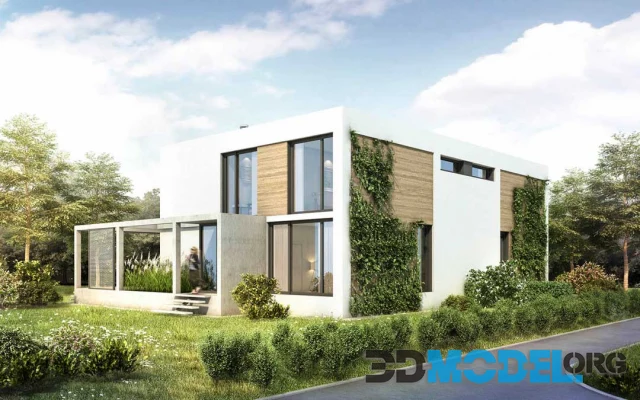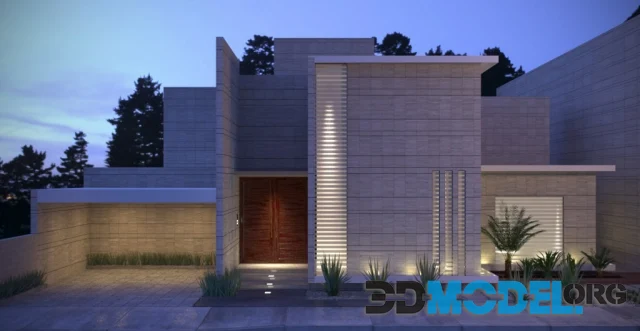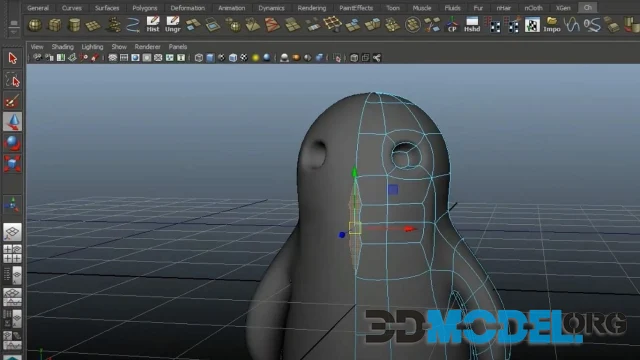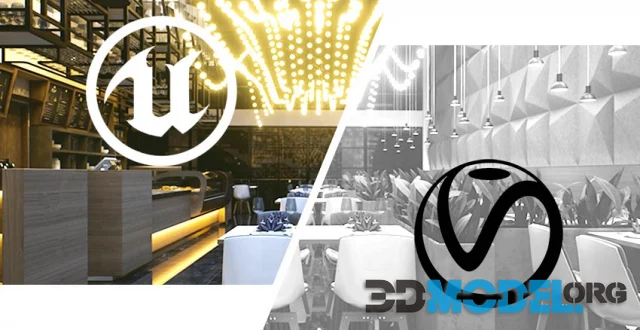Masterclass on Architectural Visualization in Cinema 4D
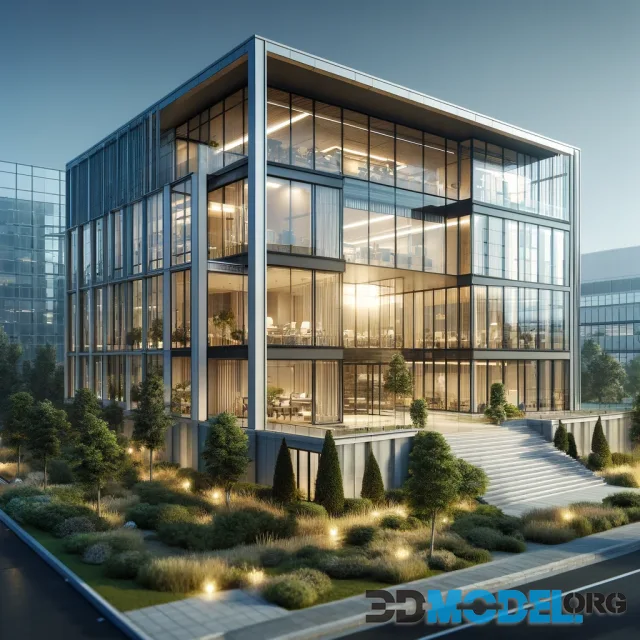
Architectural visualization is both an art and a science, encompassing the depiction of future architectural projects through computer graphics. In this realm, Cinema 4D, a popular software from Maxon for 3D modeling, rendering, and animation, holds a significant position. In this masterclass, we will explore why Cinema 4D is an excellent tool for architectural visualization, its advantages and disadvantages, and compare it with other 3D packages used for this purpose.
Why Choose Cinema 4D?
Cinema 4D is renowned for its user-friendly and accessible interface, making it an attractive option even for those new to 3D modeling. This ease of use makes Cinema 4D an excellent choice for architects who want to create visualizations of their projects without needing to rely heavily on specialized professionals.
A primary reason architects favor Cinema 4D is its powerful set of tools for modeling and rendering. The software allows for the creation of detailed models of buildings, interiors, and landscapes. Additionally, Cinema 4D integrates seamlessly with other programs like AutoCAD and Revit, facilitating the import and export of drawings and models.
Advantages of Cinema 4D
- User-Friendly Interface: One of the standout features of Cinema 4D is its intuitive interface. It allows beginners to quickly get up to speed with basic functions, making it accessible to non-professionals. For seasoned professionals, this also means faster execution of routine tasks.
- Robust Modeling Tools: Cinema 4D offers a comprehensive range of tools for creating complex architectural forms. The "MoGraph" feature, for example, enables the easy creation of repetitive structures such as building facades or interior elements.
- High-Quality Rendering: The built-in rendering engine delivers photorealistic quality images. Furthermore, Cinema 4D supports integration with external rendering engines like V-Ray and Corona, expanding the possibilities for creating highly realistic visualizations.
- Animation and Simulations: Cinema 4D provides powerful animation tools, allowing for dynamic presentations of architectural projects. Physics simulations, lighting effects, and moving objects add life and realism to your visualizations.
- Compatibility and Integration: The software supports working with files from other popular architectural and design programs. This means you can easily import models from AutoCAD or Revit and export finished visualizations in various formats.
Disadvantages of Cinema 4D
- Cost: Like many professional-grade programs, Cinema 4D comes with a significant price tag. The cost of a license can be a considerable expense for individual users or small companies.
- Resource Intensive: Working with large and complex projects requires a powerful computer with ample RAM and a high-performance graphics processor. This can be a barrier for some users.
- Learning Curve: While the basic functions of the program are easy to learn, mastering all the capabilities of Cinema 4D requires time and effort. This is especially true for advanced animations and simulations.

Comparing Cinema 4D with Other 3D Packages
When choosing software for architectural visualization, Cinema 4D is often compared with programs like 3ds Max, SketchUp, and Blender. Each of these programs has its strengths and weaknesses.
3ds Max: This tool from Autodesk is also a popular choice among architects. It is known for its powerful modeling and rendering tools and a vast array of plugins. However, the interface of 3ds Max can be daunting for beginners, and the cost of a license is high.
SketchUp: SketchUp is famous for its simplicity and intuitive interface. It is ideal for creating quick conceptual models and drawings. However, SketchUp's rendering and animation capabilities are limited compared to Cinema 4D.
Blender: Blender is a free and open-source software offering powerful tools for modeling, rendering, and animation. Blender provides extensive capabilities, but its interface and learning curve can be challenging for some users. Nevertheless, for those willing to invest time in learning, Blender can be an excellent alternative to paid programs.
Technical Details and Tools in Cinema 4D
Now, let's delve deeper into some of the tools and settings that make Cinema 4D a powerful tool for architectural visualization.
Modeling Tools: Cinema 4D offers an extensive set of tools for creating and editing 3D objects. For example, the "Knife" tool allows for precise geometry cuts, creating complex shapes and details. The "Extrude" tool enables the extension of surfaces, creating volumetric structures, which is particularly useful for modeling walls and facades.
MoGraph: This feature allows for the creation of complex animation effects and repetitive structures. For instance, using the "Cloner" tool, you can quickly generate rows of windows or columns on a building facade. "Effectors" enable the animation and deformation of objects, adding dynamism to your models.
Materials and Textures: Cinema 4D includes a powerful material editor that allows for the creation of realistic textures for your models. You can use standard materials or integrate with plugins like Substance to create even more detailed and realistic surfaces.
Rendering: The built-in rendering engine in Cinema 4D supports global illumination, physically accurate lighting, and various post-processing effects. This enables the production of high-quality images directly from the program. Integration with V-Ray and Corona expands rendering capabilities, allowing for even more realistic visualizations.
Animation and Simulations: Cinema 4D provides robust tools for creating animations and simulations. For example, using the particle system and physics simulations, you can add realistic water, fire, or wind effects to your project. This can significantly enhance the perception of your architectural project.
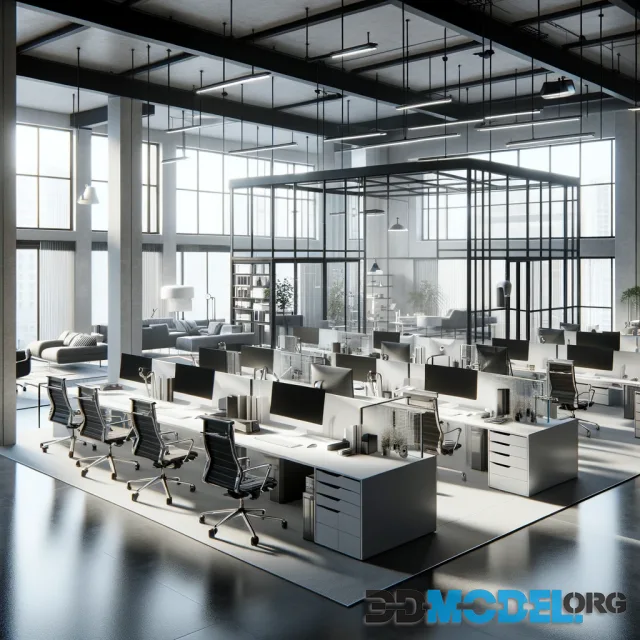
Advanced Techniques in Cinema 4D
Beyond the basic tools, Cinema 4D offers advanced features that can elevate your architectural visualizations to new heights.
XPresso: This is a node-based scripting system within Cinema 4D that allows for the creation of complex animations and procedural models. By connecting nodes, you can control various parameters of your objects, creating intricate and dynamic designs. For example, you can create parametric windows that automatically adjust their size and shape based on the dimensions of your building model.
Hair and Fur Simulation: Although primarily used in character modeling, the hair and fur tools in Cinema 4D can be creatively applied in architectural visualization. For instance, you can create realistic grass, carpets, or other fibrous materials that add a touch of realism to your scenes.
Volumetric Lighting and Fog: These effects can add depth and atmosphere to your visualizations. By using volumetric lighting, you can simulate the way light interacts with particles in the air, creating stunning sunrays or foggy environments that enhance the mood of your scenes.
Team Render: This feature allows you to distribute rendering tasks across multiple computers, significantly reducing rendering times for complex scenes. This is especially useful for large projects that require high-resolution renders or animations.
Virtual Reality (VR) Integration: With the growing popularity of VR, Cinema 4D provides tools to create immersive experiences. You can render scenes specifically for VR headsets, allowing clients to explore your architectural designs in a fully immersive environment.
Content for architectural visualization.
Don't forget to visit our sections where you can download thousands of ready-made 3D models for architectural visualization and more.
We recommend the following categories:
- 3D Architecture - link
- 3D Interior decor - link
- 3D Furniture - link
- 3D Light Fixture - link
- 3D Kitchen - link
- 3D Bathroom - link
- 3D Childroom - link
- 3D Plants - link
On our site as a rule you can get models in 3ds Max format, but usually you can download in a set of files OBJ, FBX, C4D, which allows you to import them into many modern programs for working with 3D graphics.
In Conclusion
Cinema 4D is a powerful and versatile tool for architectural visualization. It offers a broad range of capabilities for modeling, rendering, and animation, making it an excellent choice for architects and designers. However, despite its many advantages, it is essential to consider the drawbacks, such as cost and hardware requirements. When comparing Cinema 4D with other 3D packages, it becomes clear that each program has its unique features, and the choice depends on the specific tasks and preferences of the user.
If you aim to create impressive and realistic visualizations of your architectural projects, Cinema 4D can be an indispensable tool. It is crucial not only to master the technical aspects of the program but also to develop artistic vision and creativity, which will enable you to produce truly inspiring works. Embrace the journey of learning and exploring the capabilities of Cinema 4D, and you will find yourself creating visualizations that are not only technically proficient but also artistically compelling.
Ctrl
Enter
Noticed a misTake
Highlight text and press Ctrl+EnterRelated news:
Comments (0)


